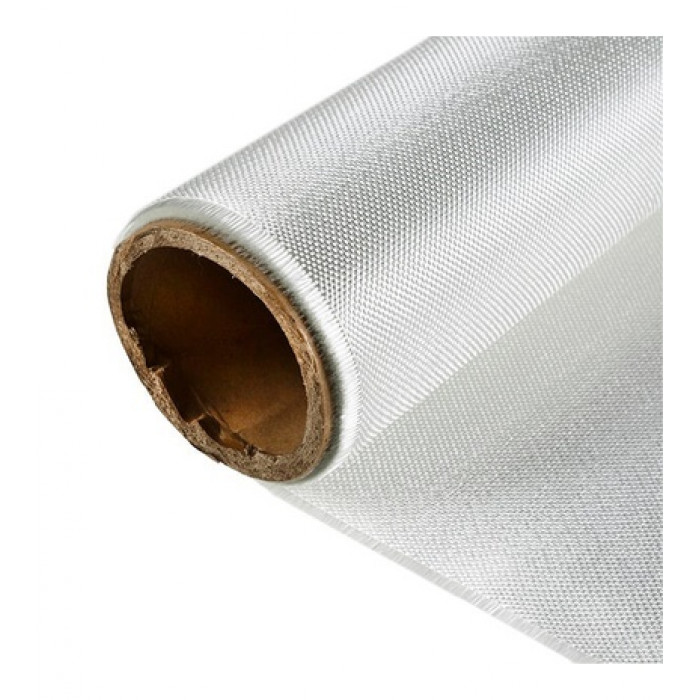Fiberglass (glass mesh) for waterproofing SSK-100 (SSK-100) is a woven or non-woven material made from fiberglass, which, in turn, is made from special types of glass. Fiberglass is made by extrusion (extrusion) of thin threads of molten glass, followed by cooling. Most often, the thickness of fiberglass filaments lies in the range of 3-100 microns, with such a thickness they can easily bend and not break. The threads are assembled into bundles (rovings), from which fiberglass is subsequently formed, or they are randomly placed in the material (without bundles) - in the first case, a woven material is obtained, in the second, a non-woven material.
The widespread use of fiberglass and fiberglass made from it is due to the unique properties and features of the material:
The material is heat-resistant (temperature resistance in the range of 200-700 degrees), does not support combustion and is an excellent heat insulator. This is due to its use for the production of work clothes for welders, metallurgists, firefighters and other employees in contact with open fire.
Safety. Fiberglass is a non-toxic material that does not emit harmful substances when heated.
The fabric is resistant to water, aggressive acidic and alkaline environments. Due to this (together with heat resistance), fiberglass has become widespread in the production of filters for gases and liquids in various chemical industries.
Excellent electrical insulating properties due to the absence of free electrons (especially for fiberglass fabrics).
High strength with low weight (1 square meter weighs about 200-300 g).
Ease of bonding to wood, glass, metal.
Rolls of 100 meters; material width - 1 meter.
Fiberglass appeared relatively recently, but quickly gained popularity. This material is made from E-glass, a flexible and durable base. It contains aluminum, boron, and silicates.
The first step in the manufacturing process is obtaining fibers that are woven like a fabric. The finished material has unique properties. It can be used independently or for the manufacture of components, parts: cable braids, roofing elements, electrical insulating tubes, etc.
Modern industry offers several types of fiberglass. Each of them has its own characteristics and specific application:
Electrical insulating. Designed for the production of fiberglass with low weight; has thermal insulation properties.
Structural. It has high strength, suitable for creating elements with a bearing function.
Roving. Not afraid of changing weather conditions; used as a basis for polymer-composite bases, products.
Silica. Used in the creation of composite materials; resistant to high temperatures, retains properties when heated up to +1700°. The properties of silica fiberglass allow it to be used instead of asbestos.
Basalt. Serves for the manufacture of products resistant to high temperatures, as well as a heater.
The advantages of fiberglass are the same, regardless of its type. Among them: inertness to adverse factors (changes in temperature, humidity, chemicals, heating, etc.), strength, long service life.
Work with fiberglass
Fiberglass has a wide range of applications. It is chosen for reinforcing load-bearing elements, car body repair, when working with building structures and for other purposes. Working with this material is quite simple. However, if impregnation with resins is to follow, pre-firing is required. This is necessary to destroy the paraffin layer, which does not disappear after the manufacture of the fabric. If you omit this step, the resin will remain on the surface and the material will not be impregnated.
cutting
If fiberglass is used for body repair or strengthening of building structures, the fabric is pre-cut into separate fragments, depending on the configuration, the size of the surface on which it is installed. For cutting, use a cutting tool, such as scissors. It is important to take into account the degree of convexity of the details: the higher it is, the smaller the fragments should be. After the cutting is completed, it is necessary to remove the fiberglass threads from the edges of the elements.
Dry processing of fiberglass
The process is simple, but requires compliance with the technology. You can start surface treatment immediately after cutting the fabric. In this case, a layer of adhesive resin is applied to the upper layer of the structure. As soon as the layer hardens, various defects will be removed from it. Next, pre-prepared fragments are applied, resin is applied on top of them, and then the part is fixed with a roller. Air bubbles must be removed, as their presence can lead to poor adhesion of the layers. After drying, the surface is painted or treated in any other way available.
Safety regulations
Fiberglass does not harm human health. However, there are certain rules for working with it. This is due to the fact that when processing the material, mechanicalin which way the smallest particles of glass are formed. To prevent them from getting into the respiratory tract and on the human body, it is necessary to use gloves, a respirator, goggles and other protective equipment. After completion of work, clothing and protective accessories are subject to mandatory cleaning. Also, when working with the material, it is forbidden to smoke and use open fire.
You can buy Fiberglass (glass mesh) for waterproofing SSK-100 (SSK-100) from us at the best price in Ukraine. A wide range of products allows us to quickly and efficiently fulfill any order, helping to complete any construction work on time.
No questions about this product, be the first and ask your question.

